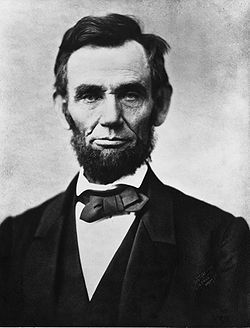This is your morning Open Thread. Pour your favorite beverage and review the past and comment on the future.
Find the past “On This Day in History” here.
November 9 is the 313th day of the year (314th in leap years) in the Gregorian calendar. There are 52 days remaining until the end of the year.
On this day in 1872, fire rips through Boston. The Great Boston Fire was Boston’s largest urban fire and still one of the most costly fire-related property losses in American history. The conflagration began at 7:20 p.m. on November 9, 1872, in the basement of a commercial warehouse at 83-87 Summer Street in Boston, Massachusetts. The fire was finally contained twelve hours later, after it had consumed about 65 acres of Boston’s downtown, 776 buildings, and much of the financial district and caused $73.5 million in damage. At least twenty people are known to have died in the fire.
In the aftermath, the city established an entirely new system of firefighting and prevention. The fire also led to the creation of Boston’s financial district.
The fire began in the basement of a warehouse at the corner of Kingston and Summer streets. At the time, this area of the city contained a mix of residences and light industry. Its buildings and most area roofs were made mainly of wood, allowing the blaze to spread quickly as the wind blew red hot embers from rooftop to rooftop. In addition, as Boston streets were narrow, large flames from one structure could literally leap across them to nearby buildings.
Firefighting units from Maine to New Haven, Connecticut, arrived to help, but efforts to fight the fire were plagued by difficulties. There was not enough water on hand to get the fire under control; the hydrant system did not work well because much of the equipment was not standardized; and even when firefighters got their hands on an adequate supply of water, the height of the buildings and the narrowness of the streets made it difficult to direct the water at the blaze from the optimum angle. Because a local equine epidemic had struck the city fire department’s horses, it was difficult to get the fire engines to the correct locations at the right times. In addition, some of the efforts were counter-productive. Explosions were used to attempt fire breaks, but this high-risk strategy was not executed with enough precision and served only to further spread the fire.
The fire was finally stopped at the doors of Fanueil Hall the following morning, but it had already destroyed much of the downtown area. Boston’s officials realized that their fire-prevention efforts had been ineffective and, in the aftermath of the disaster, began to revise and strengthen all of the city’s fire laws and regulations. An inspection system was instituted and the local fire departments began to coordinate their efforts.



 The British Egyptologist
The British Egyptologist 
 After departing Brest, Jones successfully executed raids on two forts in England’s Whitehaven Harbor, despite a disgruntled crew more interested in “gain than honor.” Jones then continued to his home territory of Kirkcudbright Bay, Scotland, where he intended to abduct the earl of Selkirk and then exchange him for American sailors held captive by Britain. Although he did not find the earl at home, Jones’ crew was able to steal all his silver, including his wife’s teapot, still containing her breakfast tea. From Scotland, Jones sailed across the Irish Sea to Carrickfergus, where the Ranger captured the HMS Drake after delivering fatal wounds to the British ship’s captain and lieutenant.
After departing Brest, Jones successfully executed raids on two forts in England’s Whitehaven Harbor, despite a disgruntled crew more interested in “gain than honor.” Jones then continued to his home territory of Kirkcudbright Bay, Scotland, where he intended to abduct the earl of Selkirk and then exchange him for American sailors held captive by Britain. Although he did not find the earl at home, Jones’ crew was able to steal all his silver, including his wife’s teapot, still containing her breakfast tea. From Scotland, Jones sailed across the Irish Sea to Carrickfergus, where the Ranger captured the HMS Drake after delivering fatal wounds to the British ship’s captain and lieutenant.
 Houdini was born Erik Weisz in Budapest in 1874, the son of a rabbi. At a young age, he immigrated with his family to Appleton, Wisconsin, and soon demonstrated a natural acrobatic ability and an extraordinary skill at picking locks.
Houdini was born Erik Weisz in Budapest in 1874, the son of a rabbi. At a young age, he immigrated with his family to Appleton, Wisconsin, and soon demonstrated a natural acrobatic ability and an extraordinary skill at picking locks. The eyewitnesses, students named Jacques Price and Sam Smilovitz (sometimes called Jack Price and Sam Smiley), proferred accounts of the incident that generally corroborated one another. The following is Price’s description of events:
The eyewitnesses, students named Jacques Price and Sam Smilovitz (sometimes called Jack Price and Sam Smiley), proferred accounts of the incident that generally corroborated one another. The following is Price’s description of events:
Recent Comments